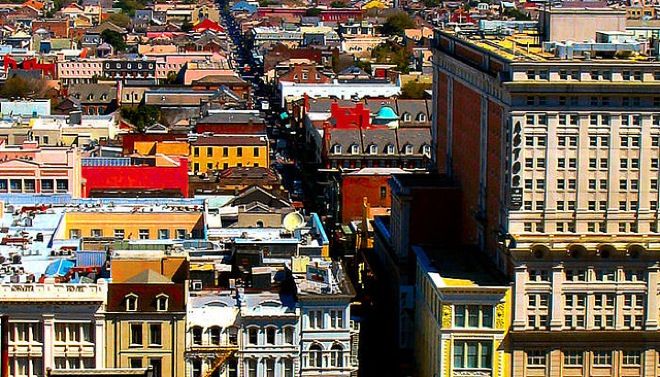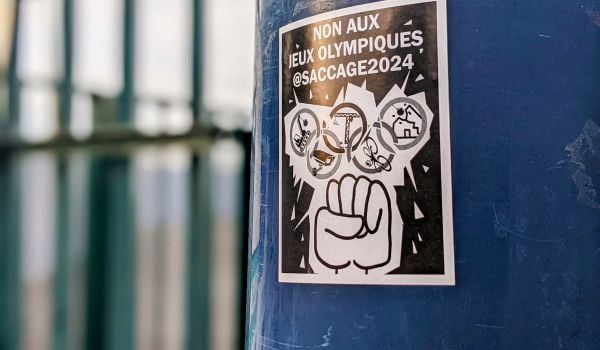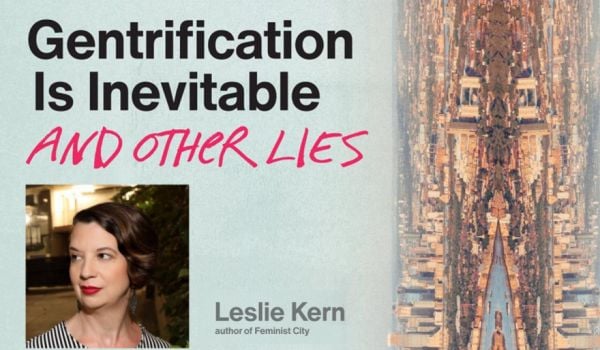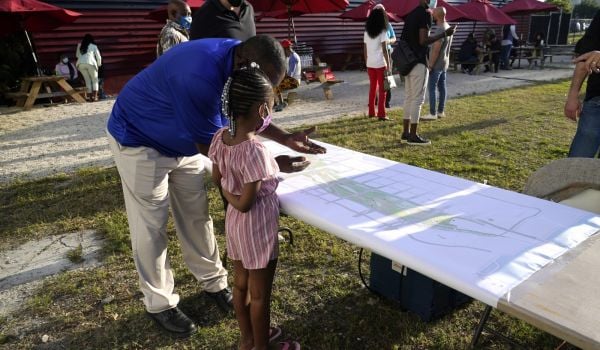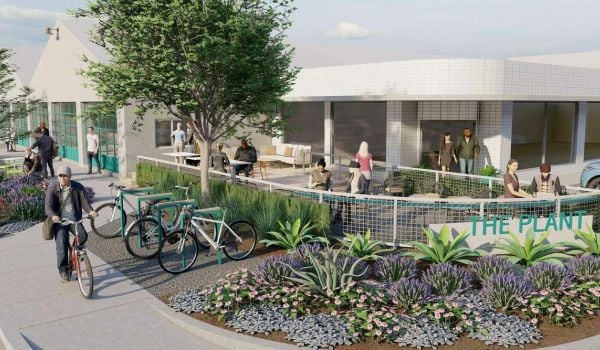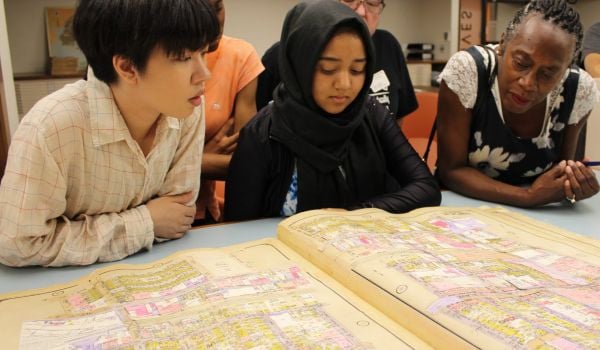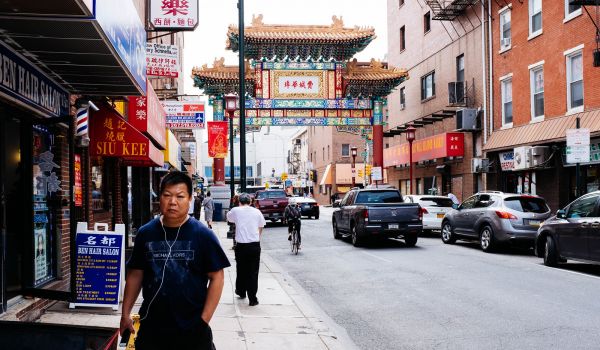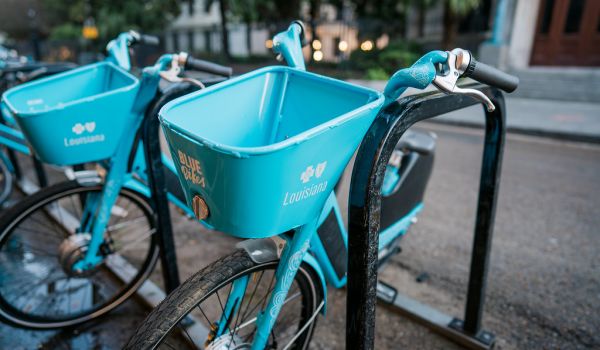Projector bulbs cooled. Wallets and purses surrendered their last business cards. Promises to email papers and data were secured as colleagues and acquaintances parted over handshakes and cordial hugs. And so, the 41st Urban Affairs Association Conference came to a close, leaving three graduate students with 24 hours to enjoy the Big Easy. Eager to experience some of the local culture, we set out to relax and decompress, but found ourselves conducting a walking research tour of urban life.
Our journey began with a swift cab ride out of downtown and through the Lower Garden District. As the taxi squeezed down streets lined with parked cars, we noted residents embracing the warming weather by jogging, installing landscaping, and attending to postponed repairs on their homes. Our ride deposited us in a gentrified neighborhood at a comfortable distance from downtown’s skyscrapers. We immediately secured food and libations, settling in on the sun-warmed patio of a recommended pub. The most gastronomically adventurous member of our group walked to a nearby crawfish boil and purchased what can be best described as a foil-wrapped block of potatoes, ears of corn, and of course several pounds of steaming red crawfish – not the easiest ‘outside’ meal to surreptitiously pass over the patio rail!
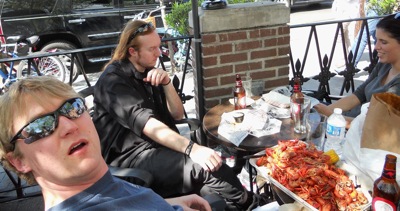
Once we had spent a couple hours consuming seafood, sunshine, and conversation, we elected to retire from the bar – now teeming with twenty-somethings – and set out on foot toward the profile of downtown. Our route carried us past rows of mixed-use developments in renovated historic buildings, all populated with high-end clothing boutiques, cafes, and antique stores. Many stores advertised their environmentally-conscious stance by touting their recycled and organic labels. One store-owner we spoke with proudly credited the economic renaissance to the formation of a green light district – a confederation of like-minded business owners “promoting an eco-conscious lifestyle.” The style of development reminded us of a conference panel session in which two scholars debated if all neighborhood revitalization efforts are inevitably forms of gentrification. The debate in the session was left unresolved, as was our first-hand assessment of the green-light district’s impact.
With walking and academic questioning taking its toll, we retreated into the cool interior of a local bar, where delicious nectarine mojitos refreshed our palates and the debate. Were the bar’s dog-friendly stance and “creative Saturday” artist discounts the result of, or a response to, gentrification? Were developments like this sleek, modern bar – with its downbeat electronica and unisex bathrooms – a means for New Orleans to retain its bohemian vibe in the face of recovery-led regeneration?
Reinvigorated by our rest, we resumed our trek, only to encounter our first major physical impediment: pedestrian progress was thoroughly blocked by the I-90 overpass and its associated snarl of on- and off-ramps.
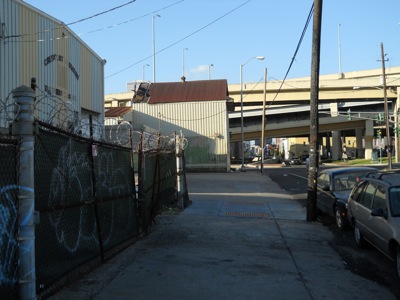
We surveyed the terrain, certain that three young but well-versed urban scholars could surely divine a safe course to the far side. However, after venturing into parking lots and being consistently met with high barricades and iron fences, we began to laugh at our own ineptitude at “crossing the street.” At each intersection we found no crosswalks or light, and in some cases the sidewalk simply petered out in a literal interpretation of the Shel Silverstein poem. While New Orleans is rightly regarded as a walkable city, it seems that like many American cities, some of the urban landscape remains purely the domain of the automobile.
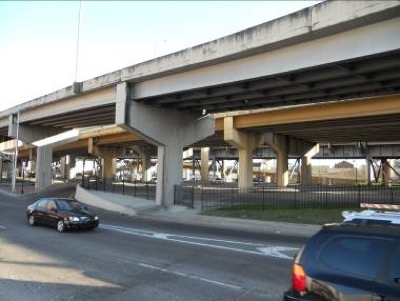
Eventually, we made a dash across the multi-lane street with the aid of some altruistic drivers, who took pity on the car-less by pausing (or at least slowing) to allow a hurried crossing. As we passed through the art galleries and restaurants of City Center, we chanced upon a rally at Lafayette Square.
Inspired to observe some urban community-building in progress, we joined the small crowd distributed between tents and folding tables to listen to a gentleman motivate the audience over a public address system. The event was the kickoff of “New Orleans Entrepreneur Week“ (NEOW) and the speaker heaped praise upon the growing business community in downtown New Orleans. He congratulated the attendees for being an essential part of this dynamic growth and explained how teams of new entrepreneurs would be competing for the opportunity to pitch their business ideas to major national firms. The winner of last year’s competition was called up to speak, and humbly explained the benefits he enjoyed once linked to a supportive business network.
The three of us marveled at the kismet that brought us into the public square. Without planning, we had stumbled into a celebration of the city’s young entrepreneurs and a visible reinforcement of local commercial ties. We each compared notes from our observations at UAA panels that portrayed highly skilled, young professionals as the drivers of modern urban economies. The speeches over, the rally morphed into a crawfish-catered party for NEOW’s local supporters, meaning it was time for us (and our still full bellies) to move on.
Continuing our walk once again proved fortuitous, as this time we encountered the parade for St. Joseph’s Day rumbling through downtown. This celebration of the city’s legacy as a port-of-entry for Sicilian residents was a timely reminder of the pivotal role that ethnicity and culture play in securing an urban identity. As we watched white-bloused youths trundle past on tractor-pulled floats, we conversed about how public rituals contribute to the recovery process in a city still healing from post-disaster population loss.
Finally, we concluded our constitutional at a local sports bar to watch March Madness basketball and digest the day’s events. In that quintessentially American setting, united with millions of others participating in the same event in sports bars across the nation, we noted that this contrast is exactly what makes New Orleans a city worth studying: a culturally and historically exotic city that nonetheless is experiencing the same challenges and opportunities as much of Urban America. The blend of the two justified New Orleans as not only an amazing location for the UAA’s 2011 conference, but also an ideal setting for a memorable afternoon stroll.
Colby King is a Ph.D. student in the Department of Sociology at the University of South Carolina. His areas of interest include urban sociology, stratification and occupational mobility, and teaching. He edits the blog Postcards of Place at www.postcardsofplace.blogspot.com/.
Matthew Cazessus is a Ph.D. Candidate in the Sociology Department of the University of South Carolina. His interests focus on housing inequality and collective behavior in urban spaces. His dissertation research measures the impact of foreclosure patterns on minority neighborhoods across Southern cities.
Laura Crommelin is a Ph.D. Candidate in the Faculty of Built Environment at the University of New South Wales, Australia. Her research considers the role of city branding in reshaping urban identity in post-industrial cities in Australia and the U.S.

